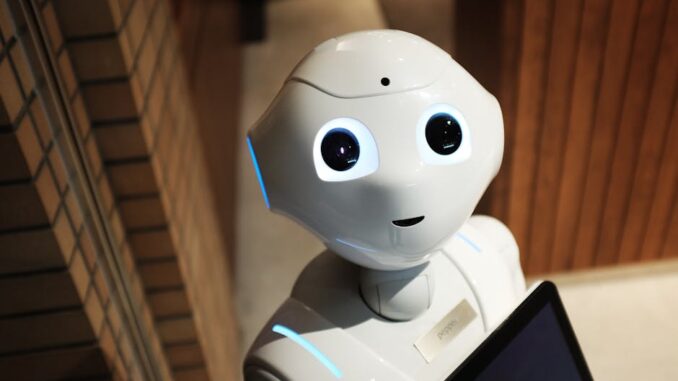
As the population ages, senior living communities face increasing challenges in providing quality care. Integrating robotic assistance into these settings offers a transformative approach to caregiving, enhancing both efficiency and resident well-being.
Enhancing Daily Caregiving Tasks
Robots are increasingly becoming integral in assisting with routine caregiving tasks, allowing human staff to focus on more personalized care. For instance, robots like Servi deliver meals and clear tables in dining areas, reducing the physical burden on staff and enabling them to engage more meaningfully with residents. (mcknightsseniorliving.com)
Similarly, robotic arms and automated medication dispensers help distribute medications accurately, minimizing the risk of human error and ensuring timely administration. (seniorsbluebook.com)
Providing Companionship and Emotional Support
Beyond physical assistance, robots offer valuable companionship to seniors, addressing issues of loneliness and isolation. Social robots like ElliQ engage residents in conversation, play games, and provide reminders, fostering a sense of connection and mental stimulation. (apnews.com)
Similarly, Paro, a robotic seal, has demonstrated positive effects in dementia care by offering soothing responses to touch and sound, enhancing mood and promoting engagement in daily activities. (en.wikipedia.org)
Monitoring Health and Ensuring Safety
Robotic systems equipped with sensors can monitor residents’ health metrics, such as heart rate and blood pressure, alerting caregivers to potential issues promptly. Additionally, robots can detect environmental hazards, like gas leaks or fires, enhancing safety within the community. (seasidehallandalebeach.com)
Addressing Workforce Challenges
The integration of robots in caregiving also addresses workforce shortages in the healthcare sector. By automating routine tasks, robots alleviate the workload on human caregivers, allowing them to focus on more complex and personalized care. This shift not only improves efficiency but also enhances job satisfaction among staff members. (leadingage.org)
Designing for Effective Integration
For robots to be effective in senior living communities, their design must consider the unique needs of both residents and caregivers. Research emphasizes the importance of integrating robotic assistance into existing workflows, ensuring that robots adapt to residents’ abilities and provide clear feedback to all stakeholders. (arxiv.org)
In conclusion, integrating robotic assistance into senior living communities offers a multifaceted solution to the challenges of aging. By enhancing daily caregiving tasks, providing companionship, monitoring health, and addressing workforce challenges, robots play a pivotal role in transforming senior care. As technology continues to evolve, the potential for robots to improve the quality of life for seniors and support caregivers is vast, heralding a new era in elder care.
References


So, if robots are taking over medication dispensing, will they also be able to argue with me about taking my pills on time? Asking for a friend… who is definitely not me.
That’s a great point! Perhaps future iterations of medication dispensing robots could be programmed with motivational interviewing techniques. They could offer positive reinforcement and personalized reminders, making the process more engaging. I am sure your friend would find that useful.
Editor: MedTechNews.Uk
Thank you to our Sponsor Esdebe
So, when do the robots start doing the dishes? Because I call dibs on the first model that can load a dishwasher properly. Think of the staff savings!
That’s a fantastic point! Automating tasks like dishwashing could free up staff to focus on more critical resident care. I wonder if we will see robots adapted to laundry folding and wardrobe work in the near future, now that would be a big time saver!
Editor: MedTechNews.Uk
Thank you to our Sponsor Esdebe
The point about addressing workforce shortages is key. Beyond task automation, how can robots be designed to enhance the skills and training of existing caregivers, creating a more rewarding and sustainable career path?